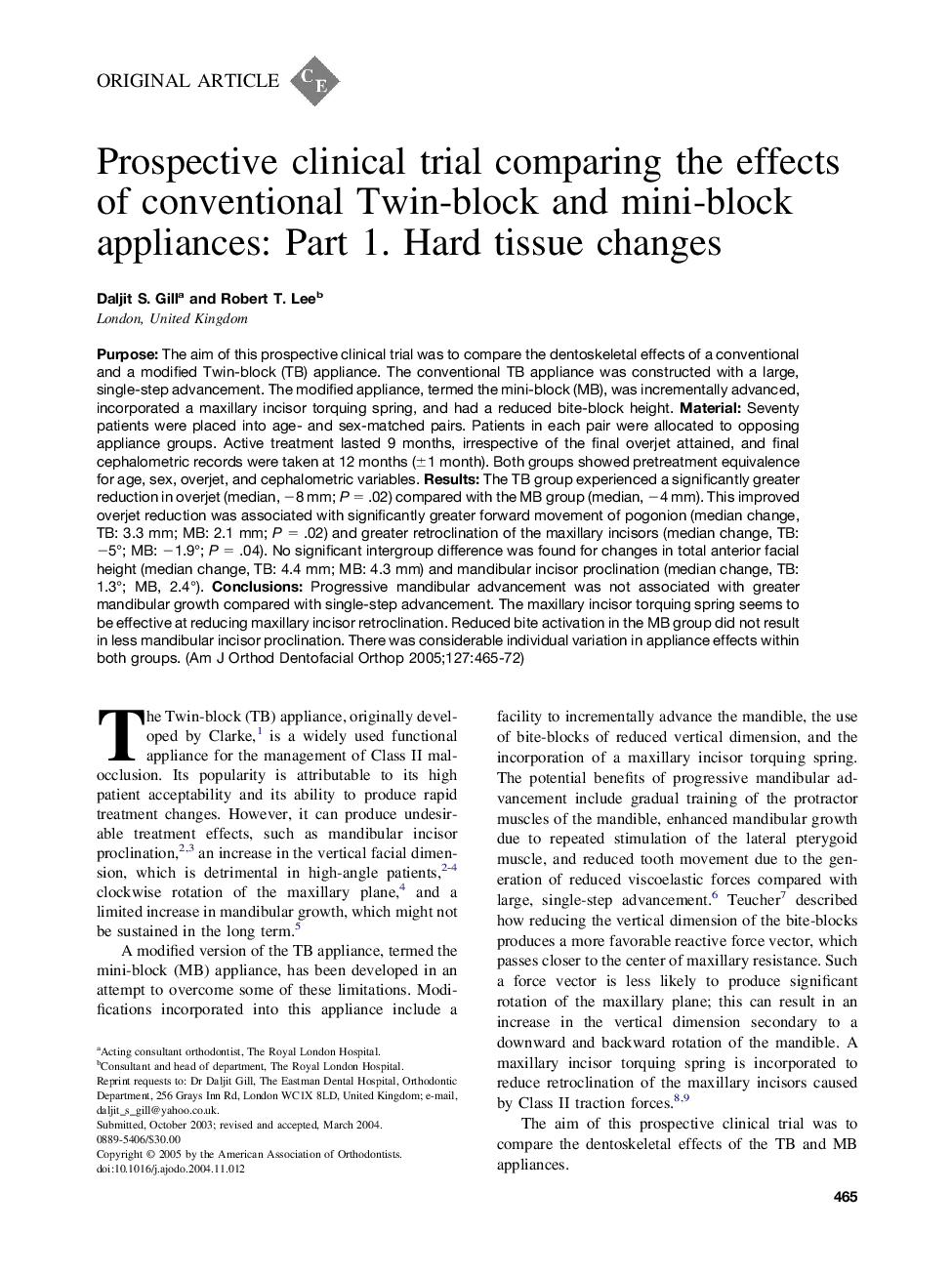| کد مقاله | کد نشریه | سال انتشار | مقاله انگلیسی | نسخه تمام متن |
|---|---|---|---|---|
| 9992992 | 1582820 | 2005 | 8 صفحه PDF | دانلود رایگان |
عنوان انگلیسی مقاله ISI
Prospective clinical trial comparing the effects of conventional Twin-block and mini-block appliances: Part 1. Hard tissue changes
دانلود مقاله + سفارش ترجمه
دانلود مقاله ISI انگلیسی
رایگان برای ایرانیان
موضوعات مرتبط
علوم پزشکی و سلامت
پزشکی و دندانپزشکی
دندانپزشکی، جراحی دهان و پزشکی
پیش نمایش صفحه اول مقاله

چکیده انگلیسی
Purpose: The aim of this prospective clinical trial was to compare the dentoskeletal effects of a conventional and a modified Twin-block (TB) appliance. The conventional TB appliance was constructed with a large, single-step advancement. The modified appliance, termed the mini-block (MB), was incrementally advanced, incorporated a maxillary incisor torquing spring, and had a reduced bite-block height. Material: Seventy patients were placed into age- and sex-matched pairs. Patients in each pair were allocated to opposing appliance groups. Active treatment lasted 9 months, irrespective of the final overjet attained, and final cephalometric records were taken at 12 months (±1 month). Both groups showed pretreatment equivalence for age, sex, overjet, and cephalometric variables. Results: The TB group experienced a significantly greater reduction in overjet (median, â8 mm; P = .02) compared with the MB group (median, â4 mm). This improved overjet reduction was associated with significantly greater forward movement of pogonion (median change, TB: 3.3 mm; MB: 2.1 mm; P = .02) and greater retroclination of the maxillary incisors (median change, TB: â5°; MB: â1.9°; P = .04). No significant intergroup difference was found for changes in total anterior facial height (median change, TB: 4.4 mm; MB: 4.3 mm) and mandibular incisor proclination (median change, TB: 1.3°; MB, 2.4°). Conclusions: Progressive mandibular advancement was not associated with greater mandibular growth compared with single-step advancement. The maxillary incisor torquing spring seems to be effective at reducing maxillary incisor retroclination. Reduced bite activation in the MB group did not result in less mandibular incisor proclination. There was considerable individual variation in appliance effects within both groups.
ناشر
Database: Elsevier - ScienceDirect (ساینس دایرکت)
Journal: American Journal of Orthodontics and Dentofacial Orthopedics - Volume 127, Issue 4, April 2005, Pages 465-472
Journal: American Journal of Orthodontics and Dentofacial Orthopedics - Volume 127, Issue 4, April 2005, Pages 465-472
نویسندگان
Daljit S. Gill, Robert T. Lee,